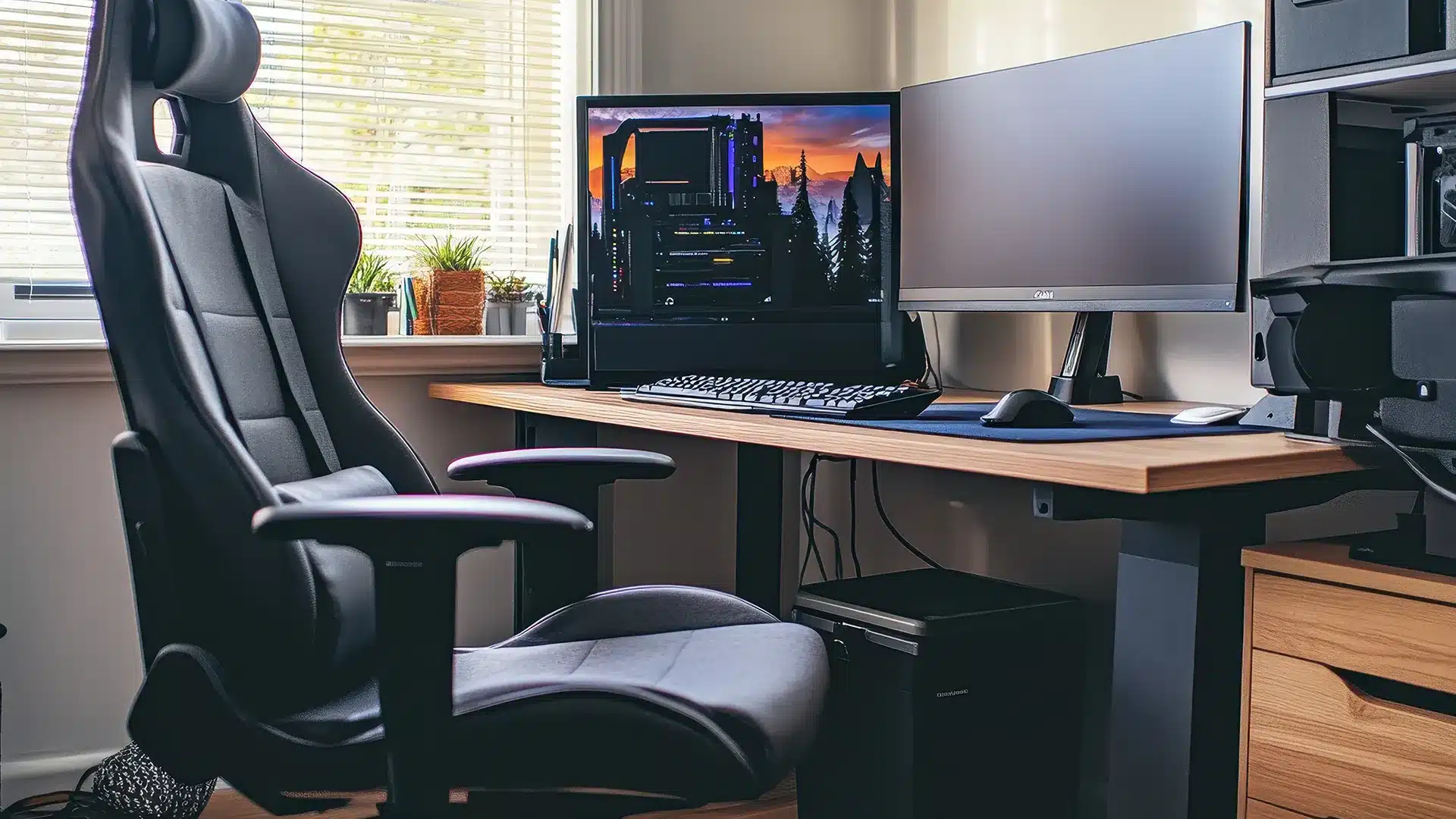A productive workspace doesn’t happen by accident. For a fact, the way your environment is designed affects how well you can think, focus, and accomplish tasks.
A cluttered desk can make your mind feel scattered. Poor lighting drains your energy. The wrong equipment slows you down. And let’s not forget the constant distractions that appear when a workspace isn’t planned intentionally.
The good news? You don’t need a complete redesign to create a setup that supports productivity. With simple adjustments and a better understanding of what actually helps you work smarter, any workspace can turn into a high-performance zone.
Having said that, below are the essentials of a productive office setup — and the common mistakes that quietly hold people back.
1. Prioritize Ergonomics and Comfort to Stay Focused Longer
Productivity begins with comfort. When your body feels supported, your mind stays clear and focused. Poor ergonomics, on the other hand, can lead to constant shifting, back pain, or eye strain. All of them can drain your energy and shorten your focus span.
An ergonomic workspace includes:
- A chair that supports your spine.
- A desk height that prevents hunching.
- Monitor placement at eye level.
- A keyboard and mouse that reduce wrist strain.
A comfortable workstation keeps your posture aligned and prevents fatigue, ensuring you can stay productive longer without discomfort distracting you.
2. Equip Your Desk With the Right Tools and Supplies
Even the best-designed workspace fails if you don’t have the tools you need within reach. Productivity often drops not because people lack motivation, but because they lose time searching for basic items or working with outdated supplies.
This is why many professionals rely on a trusted supply store like Bestwork Supply Center to keep their workspace stocked with essentials. As a result, this supports smoother workflows and better organization.
Think about how much time you save when your workspace includes:
- Quality pens, notebooks, planners, and sticky notes.
- Desk organizers to prevent clutter.
- Proper lighting to reduce eye strain.
- Chargers, cables, and tech accessories in one place.
Having the right tools ensures you stay in “flow mode” without unnecessary interruptions. And when your essentials are reliable and well-chosen, productivity becomes more consistent and effortless.
3. Keep Clutter Under Control to Reduce Mental Overload
A messy desk isn’t just visually distracting — it creates cognitive overload. Your brain processes everything in your environment, even background clutter. That’s why a clean, minimal workspace instantly feels calmer and more productive.
Clutter often builds up because items don’t have a designated place. The key is controlling your environment before it overwhelms you.
Simple strategies to reduce clutter include:
- Use trays or desk organizers for small items.
- Keeping only daily essentials on the desk.
- Storing documents digitally whenever possible.
- Doing a quick end-of-day reset to keep things tidy.
A clear desk supports a clear mind, allowing you to focus better, think faster, and switch tasks without feeling mentally scattered.
4. Use Personalization Wisely
Personal touches can inspire creativity and make your workspace feel enjoyable, but there’s a balance. Too little personality makes the area feel sterile; too much can become distracting.
Aim for subtle, uplifting elements such as:
- A small plant to boost mood and air quality.
- A framed quote or piece of art.
- A minimal desk accessory that adds personality.
The goal is to create a space that feels energizing without overwhelming your senses.
5. Avoid Common Workspace Mistakes That Kill Productivity
Some work habits and setup choices seem harmless but actually disrupt your focus more than you realize. These small mistakes create tension, distractions, or inefficiencies that take a toll over time.
The most common workspace pitfalls include:
- Poor lighting causes fatigue and headaches.
- Sitting in a high-traffic area where interruptions are constant.
- Overdecorating the desk with too many visual elements.
- Using a single screen, in case dual monitors would significantly speed up the workflow.
By simply removing or fixing these issues, you create a smoother, more intentional environment that naturally supports deep work.
Conclusion to Draw!
A productive office setup isn’t about having the most expensive desk, the trendiest chair, or a picture-perfect aesthetic. It’s about creating an environment that supports your mind, your energy, and your workflow. When your tools are organized, your body feels supported, and your surroundings are calm and intentional, you naturally get more done — and you feel better doing it.
The right workspace helps you focus, stay motivated, and make progress every day. With just a few thoughtful upgrades and by avoiding common mistakes, you can build an office setup that truly elevates your productivity and keeps you performing at your best.



